Chapter 2: The Stability of Two-Dimensional Maps
Section 4.12: Applications
-
- Example: The Henon MAP
In this example we will investigate the dynamics of the famous Henon MAP
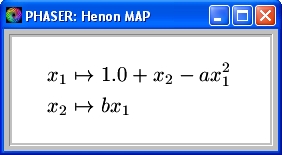 (1)
(1)
where a and b are two parameters. We will start with the classic parameter values a = 1.4 and b = 0.3 as chosen by Henon.
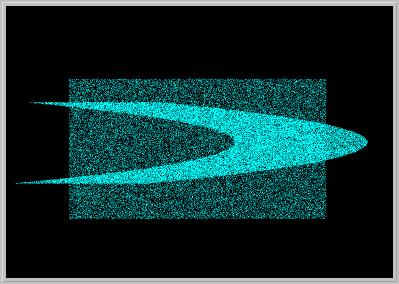
Figure 4.12.1. One iteration of a rectangle (consisting of 50,000 points) under the Henon MAP in Eq.(1) for a = 1.4, b = 0.3.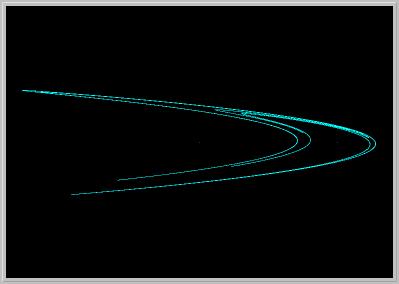
Figure 4.12.2. 100,000 iteration of the initial condition (0, 0) under the Henon MAP in Eq.(1) for a = 1.4, b = 0.3. The solution converges to the "strange attractor" of Henon.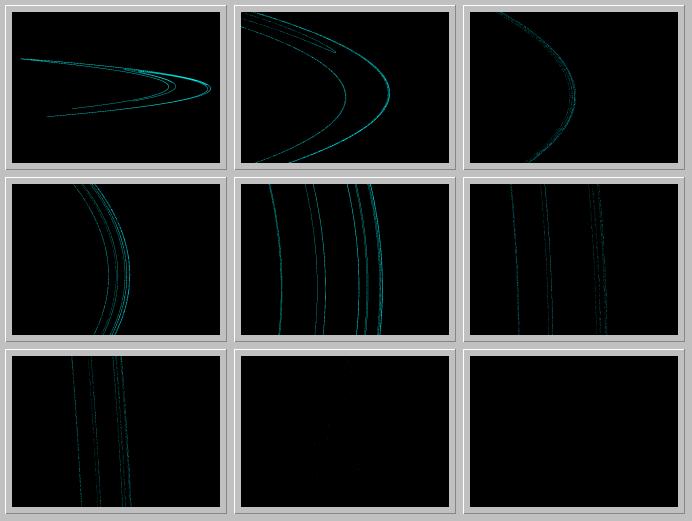
Figure 4.12.3. A Phaser Gallery of the details of the Henon attractor. A region near the tip of the "parabola" is enlarged repeatedly. The fine details of the attractor reveal a fractal-like set.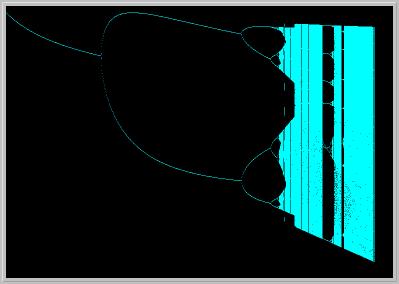
Figure 4.12.4. A bifurcation diagram of the Henon Map while a is increased from 0 to 1.5 and b = 0.3 held fixed. Horizontal axis is the parameter a and the vertical axis is the variable x1.Activities:
- Click on the first picture to load it into your local copy of Phaser. To see the first two iterates of the initial rectangle, set Stop plotting = 2. Clear and Go. (PhaserTip: Time) Notice that the second iterate folds and stretches again. To see the second iterates only set Start plotting = 2 and Stop plotting = 2.
- Click on the first picture again to load it into your local copy of Phaser. Click the left mouse button somewhere on the view and while holding the button select a rectangle and release the button; now you have selected a new FlowBox. Clear and Go. You should see your new rectangle and its image drawn. Repeat the process to get a feeling for the action of the Henon MAP. (PhaserTip: Flow)
- Click on the second picture to load it into your local copy of Phaser. Set several more initial conditions by clicking the left mouse button. Clear and Go. (PhaserTip: Initial Conditions) Notice that (most likely) all solutions move to the same attactor. Can you find a solution that does not converge to the attractor?
- Click on the third Gallery picture to load it into your local copy of Phaser. Play the Slideshow to zoom into attractor. (PhaserTip: Slideshow).
- Click on the first picture to load it into Phaser. Set the parameter to a = 0.7. (PhaserTip: Changing Parameters) Clear and Go. Notice the change in the image of the square.
- Click on the secondt picture to load it into Phaser. Set the parameter to a = 0.7. (PhaserTip: Changing Parameters). What happens to the attractor? Leave out transients to see the attractor. Try other values of the parameters. Can you locate the value of a for which there is an attractor of period-7 orbit?
- Example: The Henon MAP
[ Previous Section | Main Index | Phaser Tips ]